How to Backup Microsoft Office Before Reformatting Hard Drive or PC
How do I backup Microsoft Office before reformat my computer?
You can back up Microsoft Office by creating a system image of your computer, which will include all installed programs, including Office. This way, after reformating your laptop, you can restore the image and have Office back. Alternatively, you can also reinstall Office from the original installation media, if you have it. This will ensure you have the latest version of Office. Simply back up your files and then reformat, and you'll be good to go!
Reformatting a hard drive or restoring a computer to its factory settings can be a necessary step to fix errors or hardware problems, but it can also be a tedious and time-consuming process, especially when reinstalling Microsoft Office and activating it again. To avoid this hassle, it's recommended to back up Microsoft Office before reformatting the hard drive or computer, which can save you time and effort in the long run.
How to Backup Microsoft Office Before Reformatting Hard Drive or PC
To back up Microsoft Office before reformatting a hard drive or PC, using a third-party backup software like Qiling is recommended. This software allows you to back up the entire computer content, including system, installed programs, settings, and personal data, including Microsoft Office. With simple steps, it can help you back up Microsoft Office without reinstalling or reactivating it. Additionally, this software can also be used to move Microsoft Office to a new computer.
Step 1. Launch and run Qiling Backup on your computer. Click "File backup" on the "Backup and recovery" page.
With increasing amounts of vital data, it's a good habit to regularly back up documents, pictures, music, and videos to prevent unexpected data loss. File Backup is a reliable choice for safeguarding your important files.

Step 2. Select the files that you want to back up.
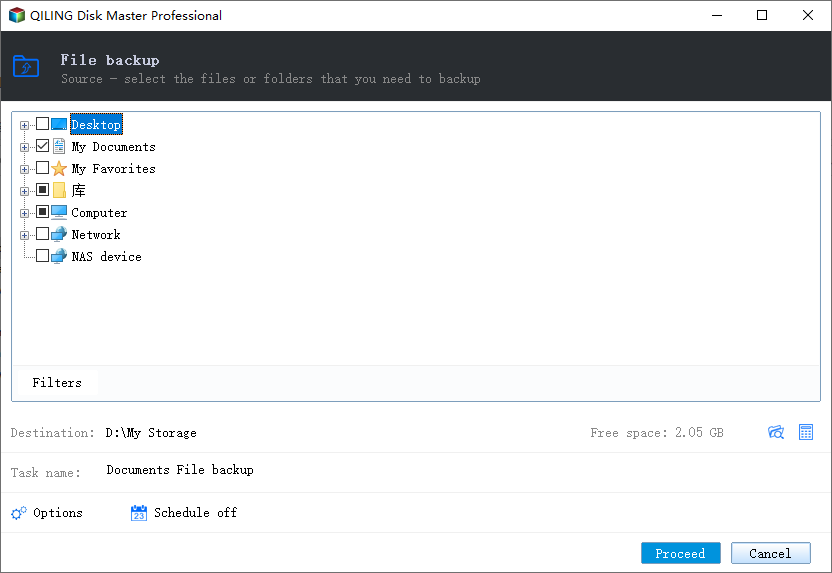
Step 3. Select a destination to save your backup of the selected files.
You should save the backup file in a different storage location or drive to avoid the risk of it getting corrupted or destroyed.
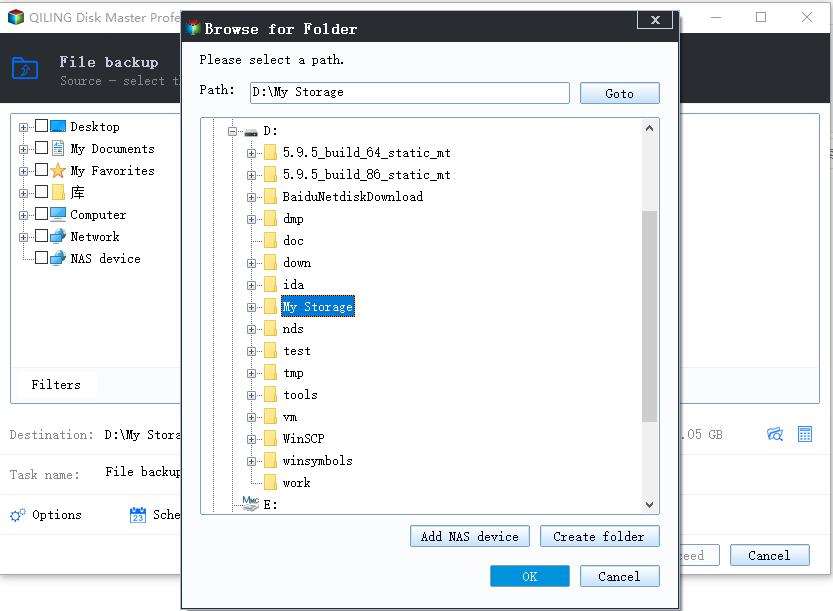
Advanced backup settings offer flexibility and automation in creating a backup plan.
The schedule is to create an automatic backup plan.
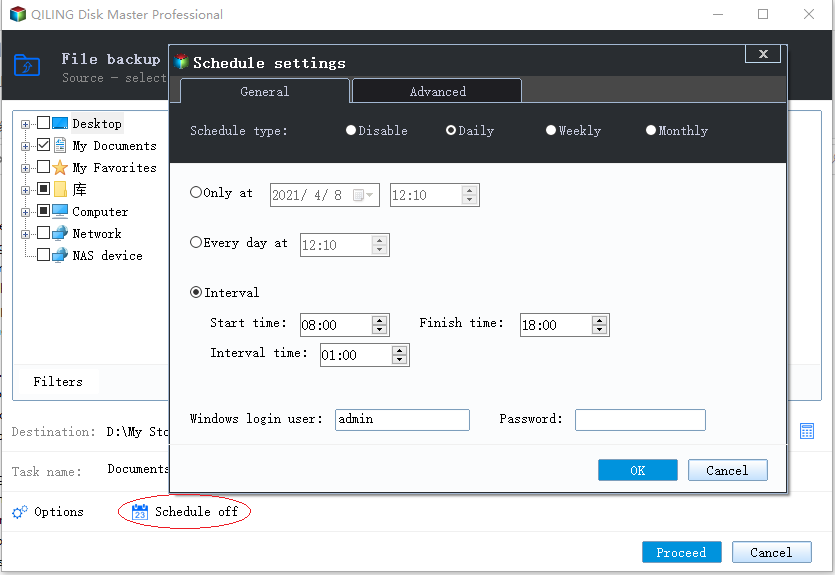
The Image-The reserve strategy is to reserve the limited image as per image retention rule, ensuring its availability for future use.
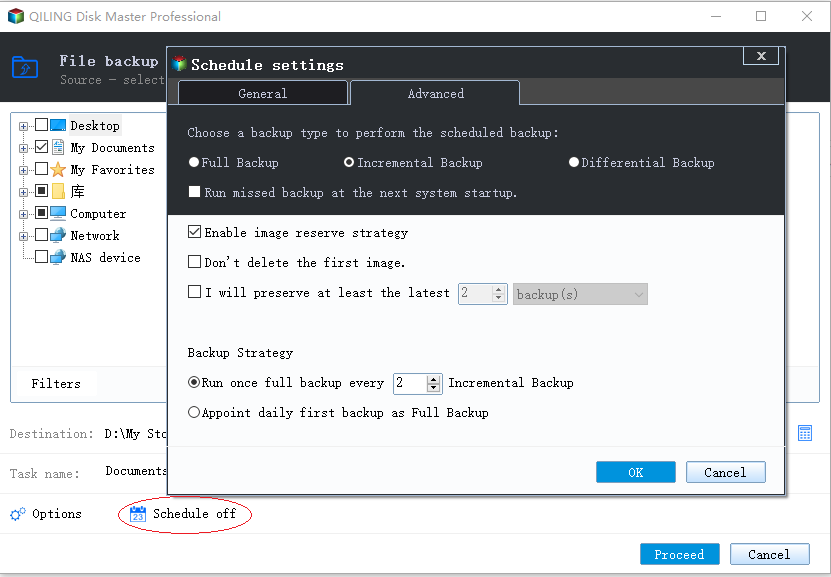
Backup options are to edit the advanced parameters.
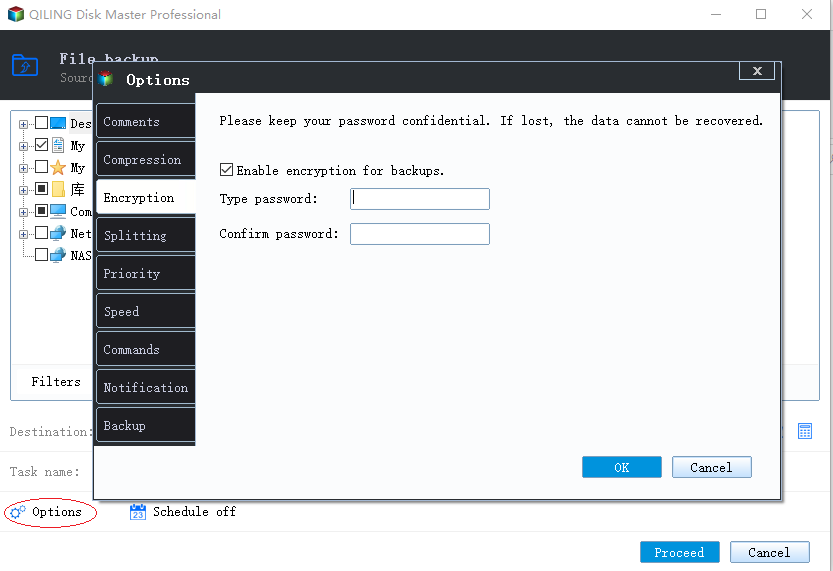
Advanced backup settings are not a necessary step for creating a backup, but rather an option for users who want to customize their backup process.
Step 4. Click "Proceed" to execute your operation.
Related Articles
- Create System Image on USB Drive in Windows 10/8/7
- [Guide] Backup Windows 10 to USB | Create a Windows 10 Recovery Drive
- Make External Hard Drive Bootable in Windows 10
- Clone Multiple Partitions to HDD/SSD
- One-click System Clone to HDD/SSD